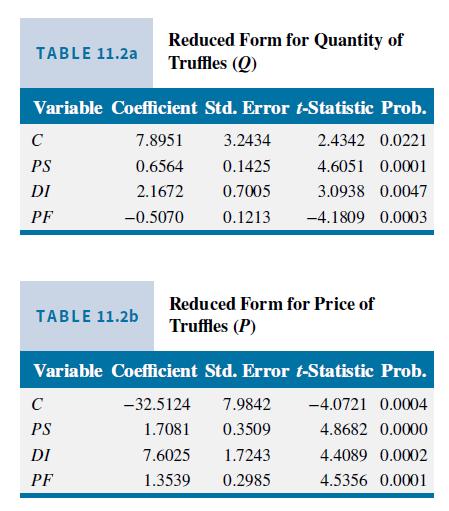Supply and demand curves as traditionally drawn in economics principles classes have price ((P)) on the vertical
Question:
Supply and demand curves as traditionally drawn in economics principles classes have price \((P)\) on the vertical axis and quantity \((Q)\) on the horizontal axis.
a. Rewrite the truffle demand and supply equations in (11.11) and (11.12) with price \(P\) on the left-hand side. What are the anticipated signs of the parameters in this rewritten system of equations?
b. Using the data in the file truffles, estimate the supply and demand equations that you have formulated in (a) using two-stage least squares. Are the signs correct? Are the estimated coefficients significantly different from zero?
c. Estimate the price elasticity of demand "at the means" using the results from (b).
d. Accurately sketch the supply and demand equations, with \(P\) on the vertical axis and \(Q\) on the horizontal axis, using the estimates from part (b). For these sketches set the values of the exogenous variables \(D I, P S\), and \(P F\) to be \(D I^{*}=3.5, P F^{*}=23\), and \(P S^{*}=22\).
e. What are the equilibrium values of \(P\) and \(Q\) obtained in part (d)? Calculate the predicted equilibrium values of \(P\) and \(Q\) using the estimated reduced-form equations from Table 11.2, using the same values of the exogenous variables. How well do they agree?
f. Estimate the supply and demand equations that you have formulated in (a) using OLS. Are the signs correct? Are the estimated coefficients significantly different from zero? Compare the results to those in part (b).
Data From Equation 11.11 and 11.12:-

Data From Table 11.2:-

Step by Step Answer:

Principles Of Econometrics
ISBN: 9781118452271
5th Edition
Authors: R Carter Hill, William E Griffiths, Guay C Lim




